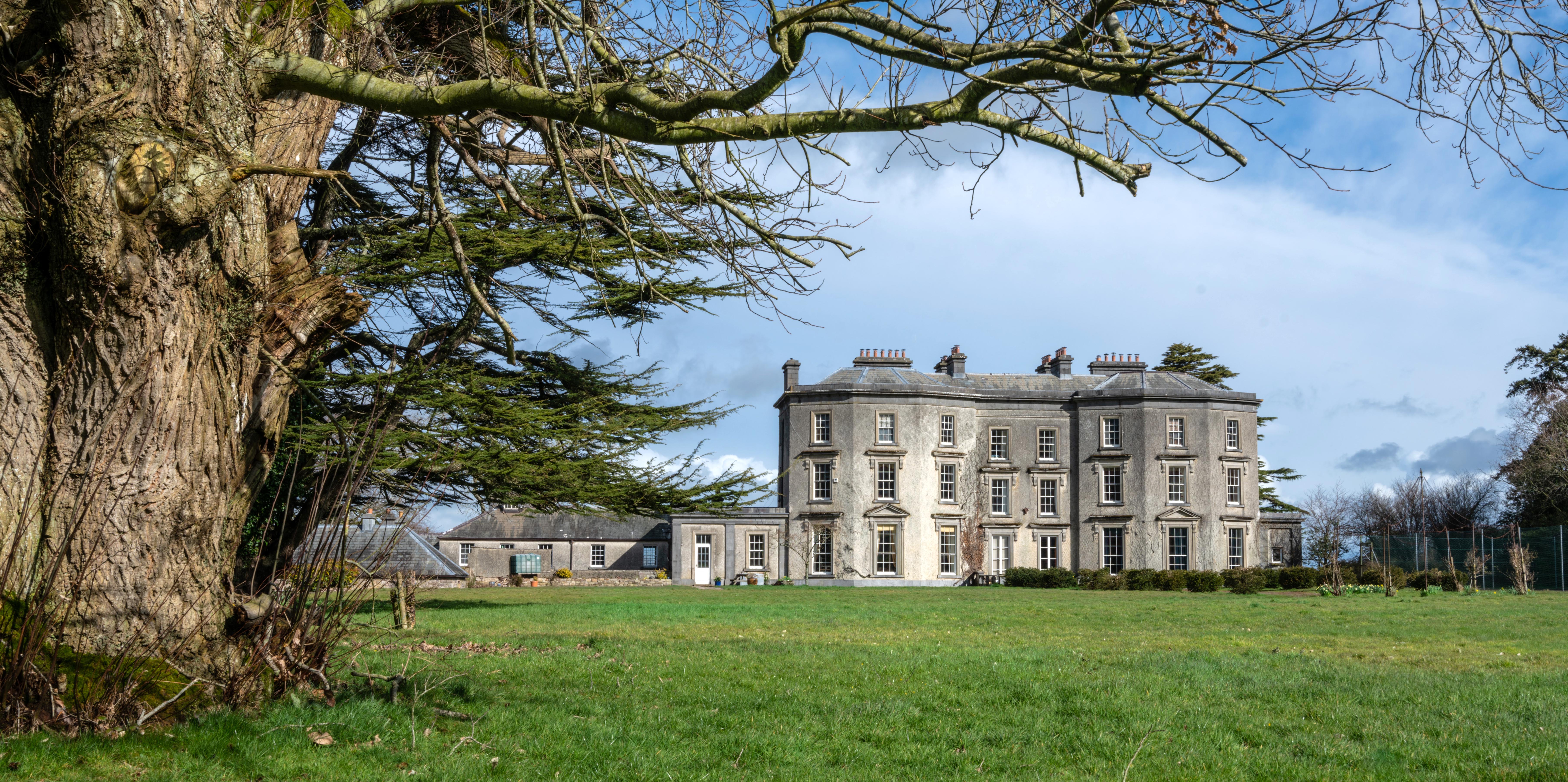Loughton
Loughton is an imposing country house in dramatically undulating countryside, surrounded by gardens and well-wooded hills near the village of Moneygall. The facade looks out over the park to the Devil’s Bit Mountains while the rear has extensive views over the borders of County Offaly and County Tipperary. The original house was built in 1777 by Thomas Ryder Pepper on the site of a seventeenth century dwelling and Ballinlough Castle, the late tower house of the previous owners, the O'Carroll family, remains in good condition. At a glance Loughton appears to date from the late Regency period but closer examination reveals a more complicated history.
Pepper left the estates to his wife’s soldier brother, Benjamin Bloomfield (1762 - 1846), when their son, another Thomas, died in a hunting accident. As a young artillery officer Bloomfield fought to suppress the 1798 Rebellion and was present at the final defeat on Vinegar Hill but his career blossomed when he was appointed Aide de Camp and Private Sectretary to King George IV. He was subsequently elected to Parliament, became a general, was appointed Envoy to Sweden, received a knighthood and was ennobled.
Lord Bloomfield’s successful career created the capital to improve his inheritance and in 1835 he engaged the talented English architect James Pain (1779 - 1877) to extend and enlarge Loughton. James and his brother George Richard (1793 - 1835) both studied under the fashionable Regency architect John Nash, who sent them to oversee the completion of Lough Cutra Castle, his finest Irish building. Other work soon followed and the brothers built up a thriving architectural practice, originally operating in partnership but increasingly acting as independent professionals from their bases in Cork and Limerick. They worked predominantly in Munster on churches, rectories, schools, offices, public buildings, county houses and castles, mainly in the newly fashionable Gothic taste. George Richard was reckoned the superior draughtsman and designer, while James was the better man of business and more skilled at attracting commissions.
Loughton is their largest and finest building in the Classical tradition. The Georgian house faced north, with its entrance in the centre of a shallow canted full-height bow. Pain completely reoriented the house with a suite of interconnecting rooms arranged to face southwards into the park and a fine stone cantilevered staircase in the oval hall. Although some decoration and fittings from the 1770s house can still be identified these new interiors were finely detailed in the late Georgian style and remain largely intact.
The principal floor is set above a concealed basement with two floors of bedrooms overhead. The new south front is of eight bays, with matching full-height half hexagonal bows at either end. The ground and first floor windows are surmounted by entablatures on console brackets, with pediments in the centre of the canted bays on the ground floor, and the facade terminates in a strong cut-stone cornice and parapet. Yet the window openings of the two central bays have not been raised to match the heads of the windows to either side, which slighty interrupts the line and symmetry of the composition. The house is completed by two short single-storey wings, with the eastern wing forming the principal entrance.
When the second Lord Bloomfield died childless in 1879 the estate was inherited by his sister Henrietta, the wife of Henry Trench from nearby Cangort Park. Their descendants lived on at Loughton until 1973 when it passed to the Atkinson family and the present owners purchased the house in 2016.
Address & Contact
Loughton, Moneygall, Birr, Offalym: +353 89 431 9150
e: loughtonhouseireland@gmail.com
Available as a Film Location
Accommodation and Short Breaks
Overnight with Dinner
Whole House Rentals


